Moniek Bloks's Blog, page 15
May 16, 2025
The Year of Queen Sālote Tupou III – Arriving in the UK for Queen Elizabeth II’s Coronation
Queen Sālote had left Tonga on 23 March 1953 to attend the coronation of Queen Elizabeth II in London. After a long journey, England came into view on 17 May, and she disembarked at Southampton on 18 May. The coronation was set to take place on 2 June.
Queen Sālote attracted attention from the moment she set foot on British soil. The newspapers were delighted by her willingness to cooperate and she was the only other reigning female monarch. Sālote enjoyed it all immensely, as can be seen in the diary she kept throughout the trip. Queen Sālote was accompanied by her daughter-in-law, the wife of the Crown Prince, Mataʻaho.
Upon arrival in Southampton, the party was greeted by Sir Arthur Bromley on behalf of the government. They had afternoon tea in the VIP lounge while their luggage was being brought ashore. They travelled to London by train and settled into a house at 26 Weymouth Street. It wasn’t very big, but Sālote liked it, and she wrote that it was “a real British house, not a newly built one.”1 She had a full schedule ahead of her, even before coronation day. She wrote, “Inwardly I said goodness gracious when I saw the daily programme and what was to be done. I was really dizzy. I quickly
remembered that is what the great world is like, and not the small, comfortable Tonga where one pleases with the time. The world is controlled by time. I gladly received the programme and decided to carry out to completion what had been planned … It appears so colossal I was a stranger to it.”2
The day after her arrival, Sālote attended a cricket match and had lunch with the Duke and Duchess of Beaufort. The next day, she attended the Chelsea Flower Show, which she called “wonderful and heavenly.”3 She visited hospitals, attended concerts, went to the theatre, saw Margot Fonteyn dance at Covent Garden and visited the Greenwich Naval College and Museum. She heard Dr Sangster preach at Westminster Central Hall and ended the month of May with a Garden Party at Buckingham Palace, where she and Mataʻaho were introduced to Queen Elizabeth II and other members of the royal family. They “returned home full of joy.”4
Embed from Getty ImagesOne newspaper wrote, “During her short stay here, Queen Sālote, whose genial dignity matches her proportions, has won an extraordinary quantity of affection from the British people.”5
The day before the coronation, Sālote made a broadcast on the BBC while Mataʻaho’s taʻovala (Tongan dress) was being prepared for the coronation by her aunt. Sālote wrote, “It had started to rain while it was still daylight, just light showers, but the streets were packed with people [camped in the streets, waiting for the coronation procession]. Later in the night, it rained more heavily.”6
The post The Year of Queen Sālote Tupou III – Arriving in the UK for Queen Elizabeth II’s Coronation appeared first on History of Royal Women.
May 15, 2025
Royal Wedding Recollections – The future King Louis XVI of France & Marie Antoinette
On 17 April 1770, Marie Antoinette swore on a bible to renounce her rights to the Austrian hereditary lands through her mother and to Lorraine through her father. This was done to ensure that no claims were made through the female line should the male line fail.
That evening, her brother Joseph II, Holy Roman Emperor, threw a supper party for 1500 people at the Belvedere Palace in Vienna. Over 800 firemen stood guard as a party of this magnitude required over 4,000 candles. Even more surprising was the presence of several dentists in case of a sudden toothache.1 Dinner was served in stages of 100 people at the time while the drinks were free flowing. The party ended up lasting until seven in the morning, although the family had withdrawn at around 3 in the morning.
The following day, Marie Antoinette was received by the French Ambassador at the Liechtenstein Palace just outside Vienna. He would be forbidden to receive her once the proxy wedding had taken place, so it had to be done before the wedding. This time 850 guests were invited, but Count Khevenhüller, the Court Chamberlain, reported that the entertainment had not nearly been as good as the night before.2
On 19 April 1770, at six in the evening, it was finally time for the proxy wedding. This was done to ensure that the woman in question could travel with her new rank. Marie Antoinette’s own brother Ferdinand would stand in for Louis Auguste, and he took the Latin vow, “I am willing and thus make my promise.”3 He knelt beside his sister and had supper by her side that evening. The proxy wedding took place in the Augustinian Church in Vienna, and Marie Antoinette was led up the aisle by her mother, Maria Theresa. Her mother and brother Joseph sat on a special dais to the right of the altar, while Marie Antoinette and Ferdinand sat at a lower level.
For this proxy wedding, Marie Antoinette wore a gown of cloth-of-silver, and her train was carried by Countess Trautmannsdorf. The wedding was officiated by the Papal Nuncio, Monsignor Visconti, as the vows were said and the rings were blessed. As the ceremony concluded, salvoes were fired outside. At nine in the evening, the official marriage supper began. This was to last for several hours and would not even be the end of the festivities in Vienna. The following night another gala would take place, but this time Marie Antoinette was “Madame la Dauphine.”
Marie Antoinette also wrote to “her very dear grandfather”, King Louis XV (her husband’s grandfather), to say that thanks to the proxy wedding, she now “belongs to Your Majesty.”4 She signed the letter as “Antoine.”
Marie Antoinette was scheduled to leave for France on 21 April at 9 in the morning. Shortly before her departure, Maria Theresa held her daughter tight and told her, “Farewell, my dearest child, a great distance will separate us… Do so much good to the French people that they can say that I have sent them an angel.”5 Marie Antoinette reportedly continued to crane her neck as the carriage departed to see her home for the last time.
A procession of 57 carriages would bring the new Dauphine to France.
Most of the two-and-half-week journey was spent cooped up in the velvet and gold carriage. They usually travelled for nine hours during the day before stopping for the night. Her first overnight stop was at the monastery of Melk, where she was treated to an opera during the evening. She reached Munich on 26 April, where she was entertained by the Elector of Bavaria and where she was allowed to rest for a day. Then she travelled to Augsburg and Günzburg, where she spent time with her aunt Princess Charlotte of Lorraine. She then travelled to Ulm and reached Freiberg on 4 May.
On 6 May, she reached Schuttern Abbey and spent her last night on German soil. The following day the official handover took place on an island in the middle of the Rhine. Her late mother-in-law had been handed over on the island 23 years earlier as well. A wooden pavilion had been erected to look like a small château. It had five rooms: two antechambers on the French side, two on the Austrian side and a central drawing room. It had been furnished with loaned furniture.
Marie Antoinette said goodbye to most of her Austrian attendants before retiring to one of the Austrian rooms. Even her beloved dog, Mops, was not allowed to accompany her. She took off her Austrian travelling clothes and changed into a French ceremonial dress in gold fabric.6 She was then led to the central drawing room, where she sat in an armchair placed under a canopy. As the formalities were completed, Marie Antoinette saw the door to the French side being opened. As she looked back to the Austrians, they had all disappeared. Sobbing, Marie Antoinette threw herself into the arms of the Countess de Noailles.7
The Countess was known for her strict adherence to etiquette, and she shrugged the Dauphine off before dropping into a low curtsey. She coldly indicated that this behaviour was not suitable for a Dauphine. Marie Antoinette excused herself and said, “Pardon me, these are for the family and the fatherland I am leaving; for the future, I shall not forget that I am French.”8 After being introduced to the gentlemen and ladies of her household, Marie Antoinette travelled to Strasbourg.
She finally met her husband and his grandfather, King Louis XV, on 14 May, at the edge of the forest of Compiègne. King Louis XV had brought not only his grandson but also three of his four surviving daughters (known as the Mesdames). Marie Antoinette alighted her carriage onto a ceremonial carpet, and she was presented as “Madame la Dauphine.” Marie Antoinette sank into a deep curtsey before the man who would now be “papa” or “papa-roi.”9 Touched by this gesture of submission, King Louis XV raised her up. She was formally introduced to her husband, who later recorded in his diary, “Meeting with Madame la Dauphine.”10
Just two days after meeting him for the first time, Marie Antoinette married the future King Louis XVI of France in person.
 (Screenshot/Fair Use)
(Screenshot/Fair Use)On 16 May 1770, the ceremony took place at the Royal Chapel at the Palace of Versailles. Marie Antoinette arrived at Versailles from La Muette at 9.30 in the morning, not yet dressed in her wedding dress. She was taken to the ground-floor apartments that had belonged to her late mother-in-law to prepare for the wedding. She briefly met her husband’s young sisters, nine-year-old Clothilde and six-year-old Elisabeth. She also met his two brothers, the Counts of Artois and Provence, who were 12 and 14, respectively.
She was then presented with the jewels entitled to her as Dauphine of France. As there was no Queen, she also received a collar of pearls which had been bequeathed to the Queens of France by Anne of Austria, Queen of King Louis XIII of France. Anne was not only her husband’s ancestress but also her own.
Marie Antoinette was dressed in a “diamond-studded cloth-of-silver wedding gown”, which had an embarrassing gap at the back through which her underwear could be seen.11 Her “bearing of an archduchess” was commended during the long mass.12 By contrast, her new husband was considered to be sulking, and he trembled as he placed the wedding ring on her finger.13
The following celebrations were felt to be part of the “finest royal wedding anyone had ever seen.”14 After the wedding ceremony, a ballet and an opera were performed at the brand-new theatre. This was followed by a state dinner with a gold service.15
The ritual bedding ceremony was still to come. The Archbishop of Rheims blessed the nuptial bed, and King Louis XV handed his grandson his nightgown. Marie Antoinette received hers from the Duchess of Chartres. They were then formally put to bed before everyone with the Rights of Entry bowed or curtseyed and departed. And then… nothing happened. The marriage would remain famously unconsummated for many years to come.
The post Royal Wedding Recollections – The future King Louis XVI of France & Marie Antoinette appeared first on History of Royal Women.
A first look at Joan Collins as The Duchess of Windor in The Bitter End
John Gore Studios has given a first look at Joan Collins as the Duchess of Windsor in The Bitter End.
She will star alongside Isabella Rossellini, who will star as Suzanne Blum, a French lawyer who was part of the Duchess’s last years of her life. The screenplay will explore “the chilling true story of the deeply complex and sinister relationship between Blum and Simpson and how, as a result, Wallis’s once-glamorous life spiralled into terror and desperation in the last years of her life.”
Also joining the cast will be Miranda Richardson and Charles Dance.
 Photo: Rory Mulvey/John Gore Studios
Photo: Rory Mulvey/John Gore StudiosIsabella Rossellini said, “I am absolutely thrilled to join the incomparable Joan Collins and the brilliant Mike Newell in bringing this extraordinary story back to life. Louise Fennell’s script allows us to delve into the complex and devastating relationship between these two iconic women, the profound impact they had on one another and their lasting mark on history.”
The film is currently in production.
The post A first look at Joan Collins as The Duchess of Windor in The Bitter End appeared first on History of Royal Women.
May 13, 2025
Sayako Kuroda – High Priestess and former Princess
Sayako, Princess Nori was born on 18 April 1969 as the youngest child and only daughter of the future Emperor Akihito and Empress Michiko of Japan. At the time of her birth, her grandfather, Emperor Hirohito, was on the throne. As a woman, Sayako has no succession rights in Japan.
Embed from Getty ImagesSayako has two elder brothers, the current Emperor Naruhito and Fumihito, Crown Prince of Japan. A few days after her birth, the newborn Princess was named by her grandfather. The New York Times reported, “Crown Prince Akihito’s first daughter, born April 18, was named Sayako today by her grandfather, Emperor Hirohito, and given the official title of Norinomiya or Princess Nori, Palace official said. They declared the name Sayako – Child of Cleanliness – was adopted from an honored phrase in one of Japan’s ancient poems.”1
Embed from Getty ImagesSayako graduated with a bachelor of Letters degree in Japanese language and literature in 1992 and then became a research associate at the Yamashina Institute for Ornithology, specialising in kingfishers. In 1998, she became a researcher there.
Embed from Getty ImagesEmbed from Getty ImagesSayako’s engagement to Yoshiko Kuroda was announced on 30 December 2004. He was an urban designer who was also a longtime friend of Sayako’s brother, Fumihito. This announcement had actually been delayed twice – first by the 2004 Chūetsu earthquake and then by the death of Kikuko, Princess Takamatsu. During the press conference, Sayako said, “I was drawn to his sincerity and that he has his own firm thoughts about things. Although we have few common interests and hobbies, I feel at ease with him, knowing that we share the same values and share the same sense of what is important.”2
Embed from Getty ImagesHer fiance said, “When I met her after not seeing her awhile, I noticed her thoughtfulness and consideration for others. As I spent more time with her, I came to feel great peace of mind. After meeting her several times, I came to think about marriage. Around the beginning of this year, I asked the princess to marry me.”3
Their wedding took place the following year on 15 November 2005.
Embed from Getty ImagesAccording to the Imperial Household Law, Imperial princesses who marry commoners have to relinquish their titles. With the abolition of the collateral lines of the Imperial Family in 1947, the option for Princesses to marry Princes has been drastically reduced. Sayako would be the sixth Princess to lose her royal status. Her wedding was attended by members of the imperial family, and thousands lined the streets to wish her well. Sayako later said in an interview, “Since I was very small, I knew that marriage would mean leaving the imperial family, so although I have some anxiety about starting a new life and don’t know what this will involve, I don’t feel anything entirely unexpected.”4
After her wedding, she became known as Sayako Kuroda. She received a $1.2 million wedding gift to help her now that she was no longer receiving an allowance. Sayako quit her job to focus on her new family life. She and her husband have not had any children.
Embed from Getty ImagesIn 2012, Sayako was appointed as high priestess of the Ise Grand Shrine to help out her aunt, Atsuko Ikeda – the former Atsuko, Princess Yori – who was the Chief Priestess. She eventually replaced her aunt in 2017. She still sometimes attends events with her family, such as a banquet in honour of the Belgian King and Queen. She spends several weeks a year away from Tokyo, living at Ise.
The post Sayako Kuroda – High Priestess and former Princess appeared first on History of Royal Women.
May 11, 2025
Imperial Consort Shen – The Imperial Consort who violated the hierarchical order of seniority
Imperial Consort Shen was Emperor Wen of the Western Han Dynasty’s favourite Imperial Consort.[1] Emperor Wen loved Imperial Consort Shen very deeply.[2] She was of “significant status.”[3] She even shared the same privileges as Empress Dou Yifang.[4] Imperial Consort Shen was highly intelligent and frugal.[5]
Very little is recorded of Imperial Consort Shen in historical sources.[6] In circa 180 B.C.E., Imperial Consort Shen was born in Handan (modern-day Shanxi Province).[7] Her early life is unknown.[8] She became an Imperial Consort to Emperor Wen (r. 180-157 B.C.E.). She quickly became his favourite and was often in his company.[9] Emperor Wen was very frugal and wore “coarse black clothes.”[10] He asked Imperial Consort Shen to wear frugal clothes.[11] Imperial Consort Shen gave up her elaborate and elegant clothes in favour of more frugal ones.[12] Thus, she led an exemplary example of frugality and simplicity.[13]
One day, Imperial Consort Shen accompanied Emperor Wen to Bailing. He asked her to play the se (a 25-stringed musical instrument), and he sang the chorus.[14] Suddenly, he became very melancholic.[15] He said to his officials, “Oh, if my coffin were to be made of Beishan stone and padded with silk wool and sealed with lacquer; no one would be able to open it!”[16] No one dared to disagree with him except Zhang Shizhi (Leader of the Court Gentlemen).[17] He said, “With valuables inside the tomb, people would find ways to break into it even if it were as strong as the mountains. But if it contained no valuables, Your Majesty would have no need to worry about burglars even if the coffin were not made of stone.”[18] Emperor Wen was impressed with Zhang Shizhi’s words and promoted him.[19] Imperial Consort Shen did not comment on Zhang Shizi’s words.[20]Modern historians believe that Imperial Consort Shen also agreed with Zhang Shizhi’s wisdom.[21]
Even though Imperial Consort Shen remained childless, she continued to be favoured by Emperor Wen.[22] In fact, she was given the same privileges as Empress Dou Yifang.[23] Empress Dou Yifang and Imperial Consort Shen both sat at Emperor Wen’s table.[24] When they were on a pleasure outing at Shangling Park, the three of them sat together at a table.[25] However, an official named Yuan Ang got up and led Imperial Consort Shen to a table located beneath the Emperor’s table.[26] Imperial Consort Shen felt insulted and refused to sit.[27] Emperor Wen was also angry and immediately returned to the palace.[28]
Once they arrived at the palace, Emperor Wen held a private audience with Yuan Ang.[29] Yuan Ang advised Emperor Wen not to let his Imperial Consort share the same status as his Empress.[30] He said it “violated the hierarchical order of seniority”[31] and could cause discord.[32] He also said that even though Emperor Wen deeply loved her, she could share the same fate as Imperial Consort Qi (see the article Imperial Consort Qi) after his death.[33] Emperor Shen agreed with Yuan Ang.[34] He explained Yuan Ang’s wisdom to Imperial Consort Shen.[35] Imperial Consort Shen rewarded Yuan Ang with gold.[36] Imperial Consort Shen died in 157 B.C.E.
Even though very little is known about Imperial Consort Shen, it is clear that she was highly respected in the court of Emperor Wen of the Western Han Dynasty.[37] Imperial Consort Shen had good observation skills and made smart decisions.[38] She knew how to appreciate and heed wise counsel.[39] She was also very simple and frugal.[40] It is no wonder why she won Emperor Wen of the Western Han Dynasty’s heart.[41]
Sources:
McMahon, K. (2013). Women Shall Not Rule: Imperial Wives and Concubines in China from Han to Liao. NY: Rowman and Littlefield.
Zhang Q. (2015). “Shen, Concubine of Emperor Wen”. Biographical Dictionary of Chinese Women: Antiquity Through Sui, 1600 B.C.E. – 618 C.E.. (L. X. H. Lee, Ed.; A. D. Stefanowska, Ed.; S. Wiles, Ed.). NY: Routledge. pp. 189-191.
[1] McMahon, 2013
[2] Zhang, 2015
[3] Zhang, 2015, p. 190
[4] Zhang, 2015
[5] Zhang, 2015
[6] Zhang, 2015
[7] Zhang, 2015
[8] Zhang, 2015
[9] McMahon, 2013; Zhang, 2015
[10] Zhang, 2015, p. 190
[11] Zhang, 2015
[12] Zhang, 2015
[13] Zhang, 2015
[14] Zhang, 2015
[15] Zhang, 2015
[16] Zhang, 2015, p. 190
[17] Zhang, 2015
[18] Zhang, 2015, p. 190
[19] Zhang, 2015
[20] Zhang, 2015
[21] Zhang, 2015
[22] Zhang, 2015
[23] Zhang, 2015
[24] Zhang, 2015
[25] Zhang, 2015
[26] Zhang, 2015
[27] Zhang, 2015
[28] Zhang, 2015
[29] Zhang, 2015
[30] Zhang, 2015
[31] Zhang, 2015
[32] Zhang, 2015
[33] Zhang, 2015
[34] Zhang, 2015
[35] Zhang, 2015
[36] Zhang, 2015
[37] Zhang, 2015
[38] Zhang, 2015
[39] Zhang, 2015
[40] Zhang, 2015
[41] McMahon, 2013; Zhang, 2015
The post Imperial Consort Shen – The Imperial Consort who violated the hierarchical order of seniority appeared first on History of Royal Women.
May 10, 2025
Book News Week 20
Book News week 20 – 12 May – 18 May 2025

Thorns, Lust and Glory: The betrayal of Anne Boleyn
Paperback – 15 May 2025 (UK)
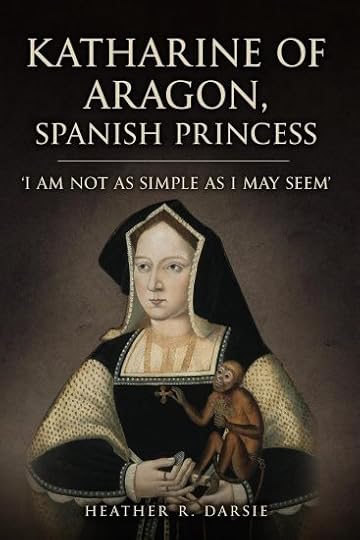
Katherine of Aragon, Spanish Princess: ‘I am not as Simple as I May Seem’
Hardcover – 15 May 2025 (UK)

Alfred’s Dynasty: How an Anglo-Saxon King and his Family Defeated the Vikings and Created England
Paperback – 15 May 2025 (UK)
The post Book News Week 20 appeared first on History of Royal Women.
May 9, 2025
The Year of Queen Sālote Tupou III – Queen Sālote’s obstetric history
Sālote was 18 years old and six months pregnant with her first child when she succeeded her father as Queen of Tonga.
She gave birth to a healthy son named Siaosi Tāufaʻāhau Tupoulahi on 4 July 1918, who would eventually succeed her as King. He was quickly followed by a second healthy son named Uiliami Tuku‘aho on 5 November 1919.
During her childbearing years, she also had at least three miscarriages. It was initially believed that she would not have another child, but another healthy son named Sione Ngū Manumataongo was born on 7 January 1922.1
Her third miscarriage occurred on 6 April 1924,2 Even though the literature calls this a “miscarriage”, Queen Sālote named her stillborn son ‘Alaivahamama’o and she wrote a lament for him. “Tell the ‘esi of Pānuve, that my child is lost from me.”3
Only the miscarriage or stillbirth in 1924 was recorded in diaries, but others have referred to miscarriages in circa 1920 and another in 1923. The one in 1923 was reportedly a daughter, although it is unclear if this does not also mean that it was a stillbirth rather than a miscarriage. A miscarriage is usually before 20 weeks of pregnancy.4 One miscarriage took place at Faka’osikato, on the island of Ha’afeva, Ha’apai and this child was buried at Falefakauo.5
Queen Sālote’s second son, Prince Uiliami Tuku‘aho, died at the age of 16 of dropsy, but her two other sons both lived to adulthood.6
Queen Sālote’s eldest son was born weighing 11 pounds, and she had suffered painful tears during the birth. She believed they were the cause of her later health problems and subsequent miscarriages.7 By the 1930s, she felt generally unwell. She was examined at home by Dr Olive Wood, who told her that she may have cancer and to seek medical advice in Australia. The doctors in Sydney eventually concurred with Dr Wood’s diagnosis of cancer. On 22 August 1935, Queen Sālote underwent a hysterectomy. Queen Sālote was grateful for the care she received and declared, “My empty cup is full to overflowing.”8
The post The Year of Queen Sālote Tupou III – Queen Sālote’s obstetric history appeared first on History of Royal Women.
Royal Horticultural Society names rose for Princess of Wales
The Royal Horticultural Society (RHS) has named a rose for the Princess of Wales to celebrate the healing power of nature and raise awareness of the benefits of being outdoors.
“Catherine’s Rose” has been bred by Harkness Roses and is described as “a stunning floribunda, has subtle coral-pink blooms, which are produced in abundance, and have a rich perfume with hints of Turkish Delight and mango. With flowers that attract pollinators, Catherine’s Rose will thrive in a mixed border, as a hedge, in a large container or in a rose bed.
Profits from the sale of Catherine’s rose will go to The Royal Marsden Cancer Charity, which will help The Royal Marsden NHS Foundation Trust establish a unique training programme for clinical teams nationwide.

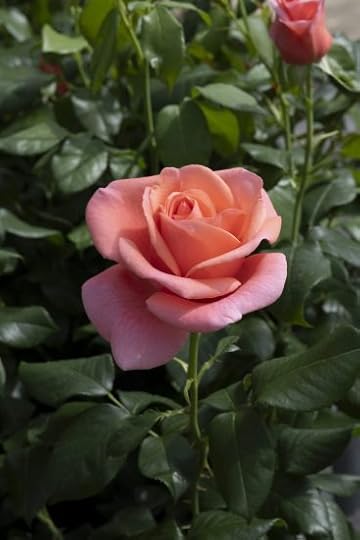
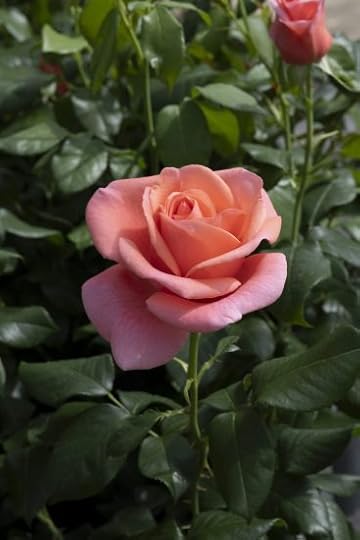


Clare Matterson, RHS Director General, said, “As well as supporting the incredible work of The Royal Marsden, Catherine’s Rose will raise awareness of how nature and gardening can help to heal. We know how important this message is, as every day we see how accessing nature and being outside is vital for our health and happiness. Crucially, too, Harkness Roses has done a wonderful job breeding this spectacular rose that is going to bring so much joy to all our nation’s gardeners and keep our precious pollinators buzzing too! It’s a really special rose.”
Philip Harkness, Managing Director, Harkness Roses, said, “We’re delighted the RHS is naming this stunning floribunda rose for The Princess of Wales, celebrating wellness and nature. It is a privilege for Harkness Roses to work with The Royal Marsden, where donations of this beautiful rose will help raise funds for this vital charity.”
Dame Cally Palmer, Chief Executive, The Royal Marsden NHS Foundation Trust, said, “As a specialist cancer centre, The Royal Marsden’s mission is to ensure every patient has the care and support they need to achieve the best outcome and patient experience. Every rose sold will help The Royal Marsden establish a unique training programme for clinical teams across the country in prehabilitation and rehabilitation techniques, which make such a difference to patient care. We are honoured to have Their Royal Highnesses The Prince and Princess of Wales as Joint Patrons of our specialist cancer centre, and we are very grateful to The Princess and the Royal Horticultural Society for setting up this initiative and for the benefit it will bring to cancer patients everywhere.”
The post appeared first on History of Royal Women.
May 8, 2025
The Akishino Tiara
The Akishino Tiara is worn by the current Crown Princess of Japan, Princess Kiko.
The origins of the tiara are unclear, but it made its first appearance at the wedding of then-Kiko Kawashima and the second son of Emperor Akihito of Japan, Fumihito. He became Prince Akishino upon his marriage and has been the Crown Prince of Japan since his brother’s accession to the throne in 2019.
Embed from Getty ImagesThe design of the tiara is based on Kiko’s imperial emblem, the iris flower. It consists of pearls and diamonds, which is traditional in Japan.
The tiara is part of a parure and Crown Princess Kiko has worn the matching necklace as well.
The post The Akishino Tiara appeared first on History of Royal Women.
May 7, 2025
First look at proposed design concepts for the Queen Elizabeth II memorial site
The public has been given a first look at proposed design concepts for the Queen Elizabeth II memorial site.
The concepts are the results of an open competition run by Malcolm Reading Consultants. The five teams that were shortlisted were selected based on their experience and unique skills.
The Queen Elizabeth Memorial Committee, established by the Government and Royal Household in 2023 and chaired by the late Queen’s former Private Secretary Lord Janvrin, is overseeing the project.
The concepts can be viewed in an online exhibition and invite the comments of the public. Eventually, a panel of committee members will select the winning design and finalise the design. This will be unveiled in 2026 in St James’s Park, in what would have been Queen Elizabeth II’s centenary year.
Option one



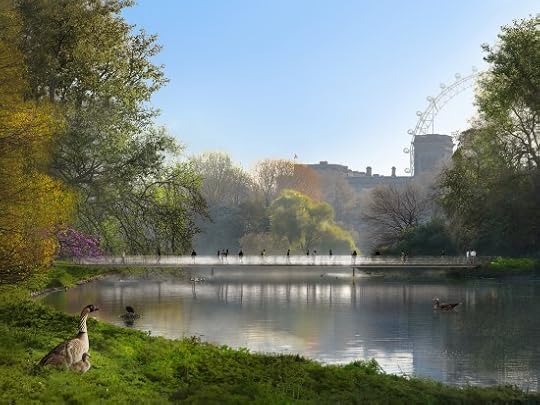
Option two
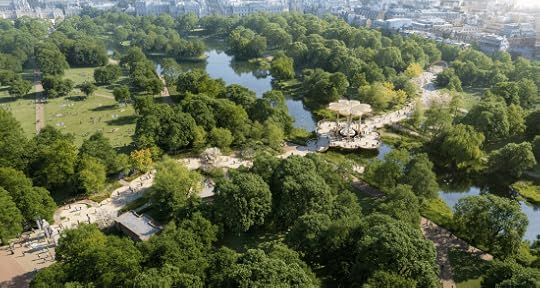



Option three
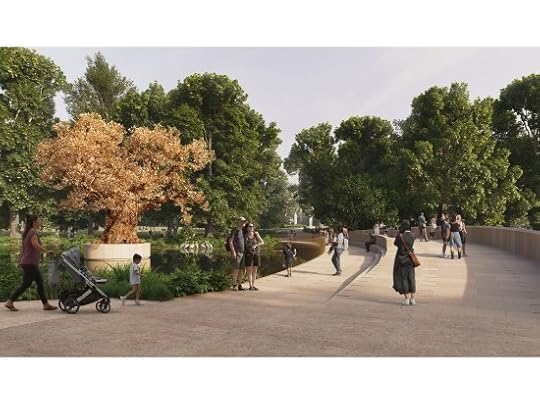

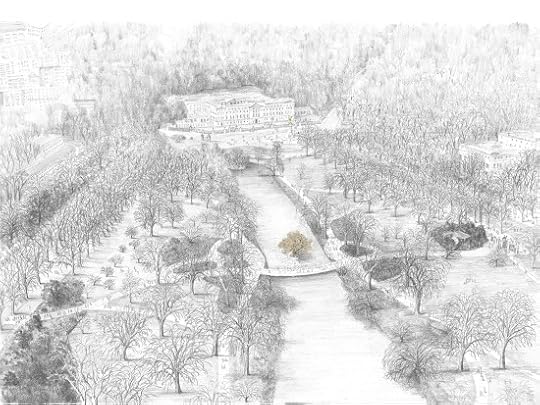
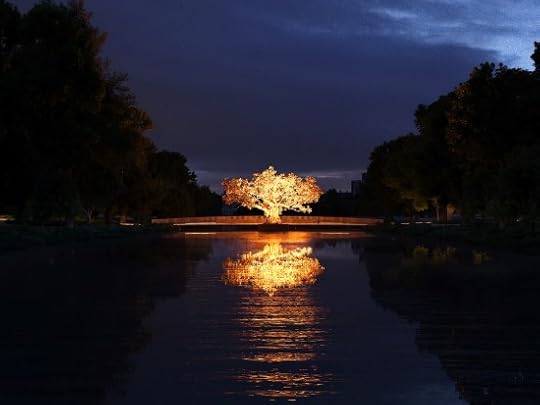
Option four
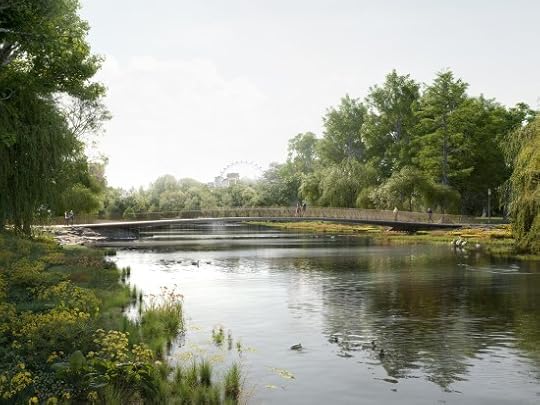



Option five




Lord Janvrin said, “Queen Elizabeth II’s extraordinary life of service profoundly touched countless individuals, and she was a figure of great respect and admiration. Memories of her long reign are still fresh for so many of us, and we need to capture the essence of them for future generations. In recognition of this, it is only fitting that we invite the public to express their views on these design concepts. We are delighted to be working with some of the best architects, artists and designers in the world to produce a landmark memorial of outstanding beauty that celebrates and honours the life of Queen Elizabeth II.”
The post First look at proposed design concepts for the Queen Elizabeth II memorial site appeared first on History of Royal Women.



